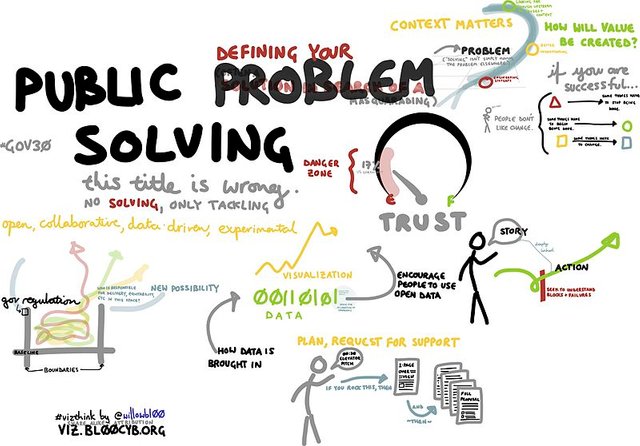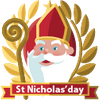Problem Solving A Riddle
So in life there is a skill that many people lack the is very hard to teach, problem solving. You see problem solving is not one skill but a group of many skills put together, such as: analyzing, breaking it down, critical thinking, etc. So I am going to write a small post about how I approached a problem here to solve it. For those that do not want to look at that link (I mean why not support the author) it was a riddle posted by @droopy and I will post the riddle here as well. So this post will outline a riddle, how I approached the problem to solve it, and finally it will end with how you can apply these skills to solve different problems. I am not claiming to be exceptional at problem solving, I just think that it is something that might be fun to do.
The Riddle
You are traveling to the city of Yrth and come to a fork in the road, one path leads the Yrth and the other does not and you do not know which way to go. At the fork there are three people. One is from the city of truth, he will answer any question truthfully. Another is from the city of lies, he will answer any question with a lie. The third is from the city of chaos, he will randomly with a 50/50 chance tell the truth or lie when answering a question. You have no idea which person is from which city. You may ask two questions. Each question can be addressed to exactly one person. How can you guarantee that you will know which path is correct with only two questions.
So to rephrase the riddle, there are two paths: the correct one and the wrong one; there are also three people: one whom always tells the truth, one whom always lies, and one whom will sometimes lie and sometimes tell the truth. You have 2 questions to figure out which way to go. When I first heard this I though about The Hardest Logic Puzzle Ever and I thought about The Twins Logic Puzzle. For those that do not want to read those, I will give brief summaries.
The Hardest Logic Puzzle has 3 omnipitant beings, 1 always lies, 1 always tells the truth, and 1 randomly answers. With 3 yes or no questions, determine which being is which. There are a few more stipulations and stuff but that is the important part.
The Twins: there are 2 identical twins, 1 always tells the truth and the other always lies. With 1 question determine which twin is which.
There are also variations upon these logic puzzles like one with the twins one where there is fork in the road and one path is good and the other is bad, with one question determine which path is the good one. Anyways, you would think from reading these that this puzzle is actually harder than the Hardest Logic Puzzle Ever but by time we are threw I think you will see how easy this puzzle actually is.
Problem Solving
As I said, this problem is easier than the one where you have 3 questions because in this one you do not need to determine whom tells the truth or whom lies, you just need to find a way to remove the random guy from the equation and using simple logic we can. But before we work on that, lets determine a limit of how many of our 2 questions we can use to determine which one answers randomly. To do this, lets make solve a similar problem that I thought of, the twins problem, but with a variation.
The twins problem we will approach is the problem where there are 2 twins (a liar and a truth teller) and a fork in the road. On one path there is the city I want to get to and down the other there is something bad. So I need to create a question that I can ask either brother and get the same answer. Well what if I asked the brothers what the other one would answer? Think about it,if you asked the truth teller which path the liar would tell you to go down, he would tell yo the bad path, and if you asked the liar then he would tell you the opposite of the truth teller which would also be the bad bath. The question remember is "What path would your brother tell me is the right path?"
So to explain why this question works, I will explain. First, ask the truth teller, he will tell you honestly what path his brother (which will lie) to go down. Mathematically you have an equation where you would have x=(+n)*(-n) leaving x to be negative, or the wrong path. So now you just go down the opposite path, but how does it work the other way? Simple: when you ask the liar which path his brother would tell you to go down, his brother would tell you the correct path so his brother will lie and tell you the opposite of the correct path so you just have to go down the opposite of what you are told.
So now we know that we can determine which path we need to go down in only one question, meaning we need to find a single question that we can ask so that we can be guaranteed to ask either the liar, or truth teller, that question.
This is a little harder to solve so to help you solve it I will present it to you in a more visual manner. Imagine the 3 men were standing side by side, where '[n]' represents a man (or woman, I won't discriminate) and n represents the number. So like this:
The truth teller, knowing the liar, will say: "yes the other consistent man would say this man is consistent"
Since the man in position 2 is the random guy, we know that the liar would lie and say he is consistent and the truth teller would say what the liar would say honestly. What if the liar was there though? Well the truth teller would say he is not consistent and the liar would lie about this saying the man in position 2 is consistent. What this means is if the man in position 1 says the man in position 2 is consistent then move to the man in position 3, and if he says the man in position 2 isn't consistent then move to the man in position 2.
I hope you can extrapolate and see why that solves the 3rd case without an explanation directly. So in case one, no matter what the random guy answers, you will always move to someone consistent for the second question, and in case 2 and 3 you will always be directed to move to the other consistent person.
Applying These Skills
So I am not going to lie, this post didn't teach you how to solve a problem, nor did it teach you the necessary skills to do so. Instead this post showed how I solved a problem by first solving an easier, related, problem and then breaking the harder problem down into that easier, related, problem. There might be problems where you cannot break them down to make them any easier but with many problems in life you can. Instead what this post shows is that, sometimes, it is easier to approach a problem by not approaching. When I first tried to solve this riddle, if I hadn't known about the twins problem (or its solution) I would have had a lot more difficulty solving it as I wouldn't of been able to know how to handle that second case (or third) case presented. Now maybe you want to try to solve some problems but you do not know where to start. My answer is to start with easier problems and practicing solving them. I loved sudoku puzzles when I was younger, and mazes, and always enjoyed the problem. The honest truth on how to learn to solve problems is to practice, at first with easy ones and slowly increase the difficulty. Maybe try some easy riddles like the River Crossing riddle (can be found here) or maybe try something easier. So for some practice, solve these riddles: [1] [2] [3].
The methods presented to solving this problem were by Analogy and by Analysis. One could also argue that I used MEA to do so. I have covered problem solving techniques in my engineering classes as most of our classes are working on teaching us how to approach and tackle a problem. This post, although about riddles, is an introduction to the idea of problem solving so that I can introduce engineering topics in a much easier way. I am going to teach you to be an engineer with fun riddles.
References
What Is A Logic PuzzlePicture 1
picture 2
Picture 3
Original Post
The Hardest Logic Puzzle Ever
Twins Puzzle
Problem Solving
Do you enjoy reading or writing topics related to STEM (Science, Technology, Engineering, and Mathematics) then I would suggest checking out @steemstem! They do wonderful work curating the best STEM related posts on Steemit. For more information check out the SteemStem chat room on steemit.chat or check out their Guidlines and start writing.











thanks for the writeup, I sent you the prize and gave you a shoutout, a resteem and a link in the solution post here: https://steemit.com/riddle/@droopy/steem-riddle-of-the-week-8-lies-truth-and-chaos-solution-revealed-prize-awarded. I'll post my next riddle of the week in a few hours :)
This is an oldie but a goodie!
Yeah
my time isnt wasted on reading this,, thanks for sharing
No problem